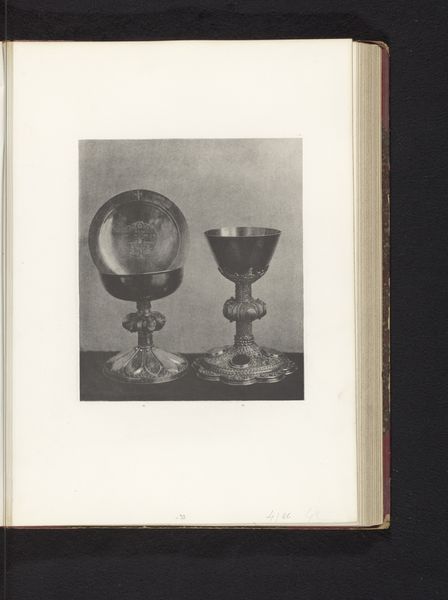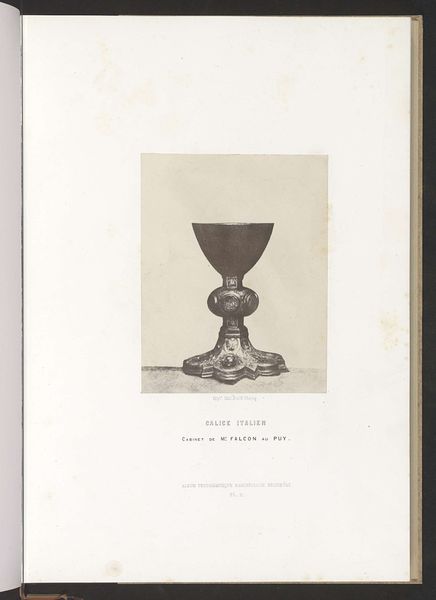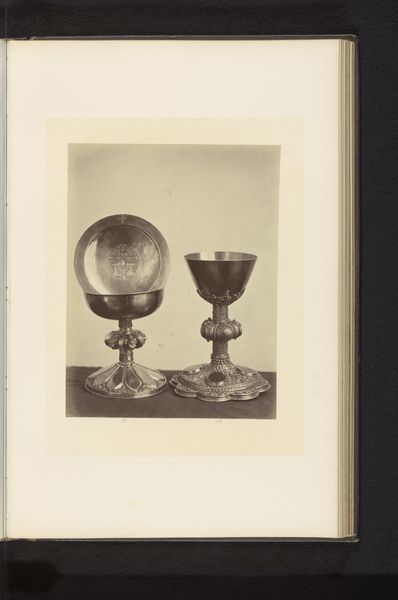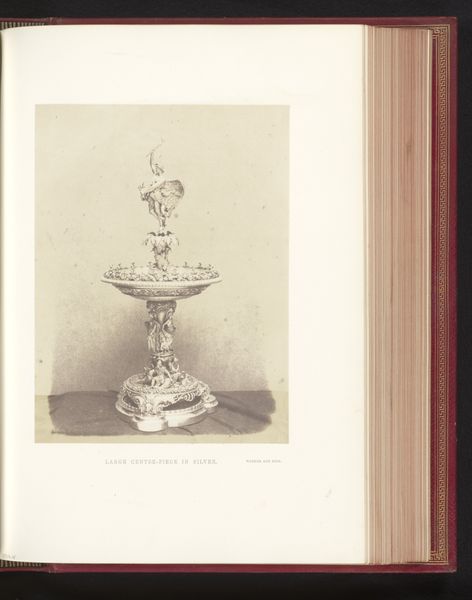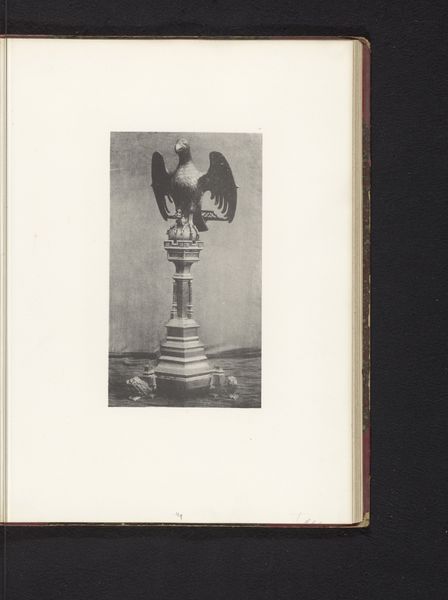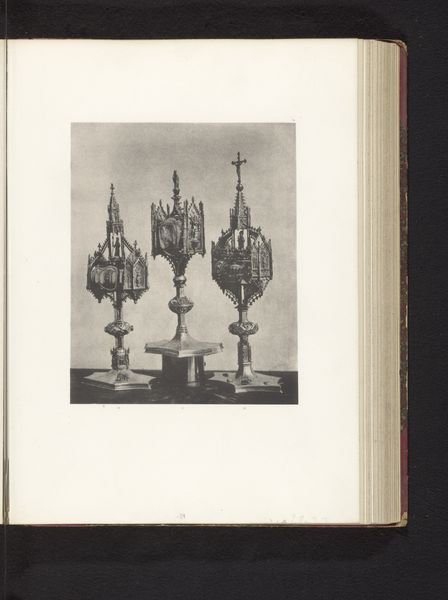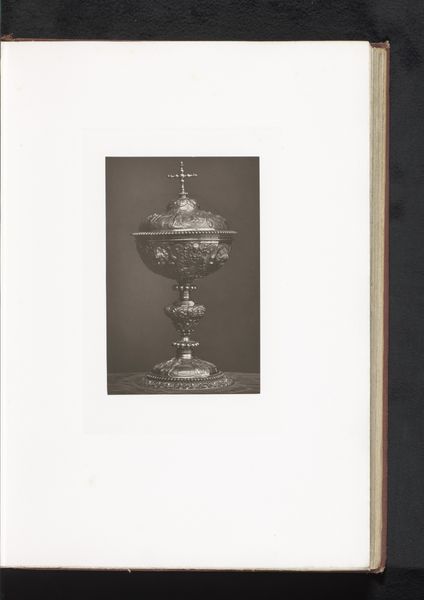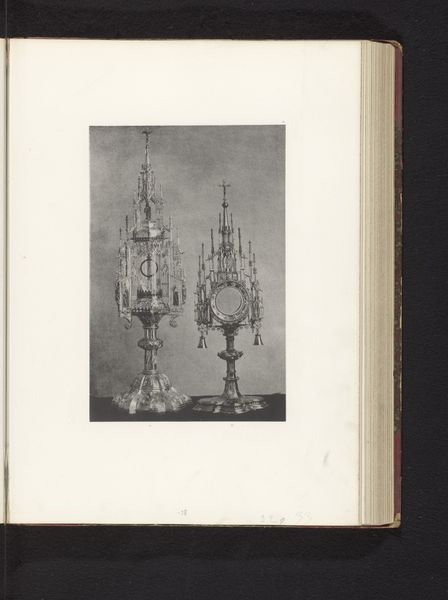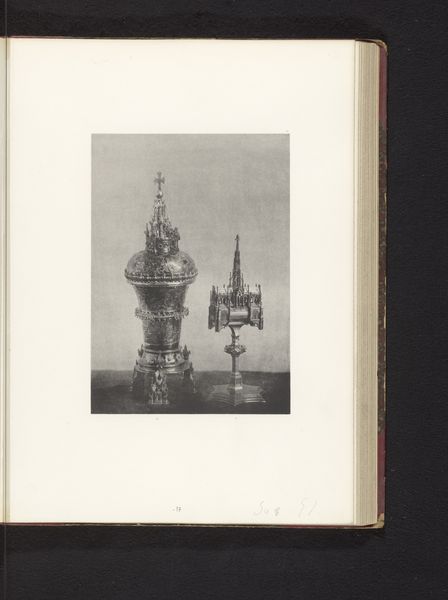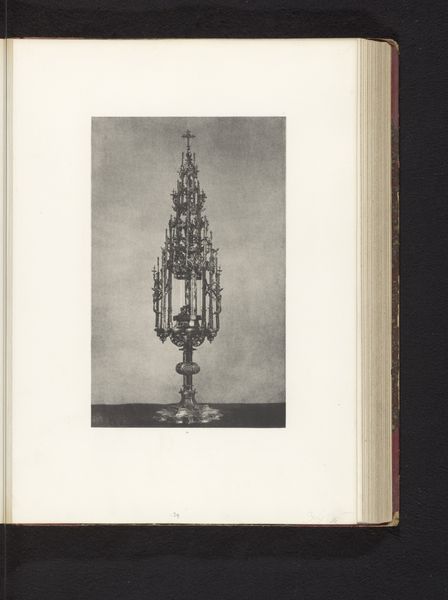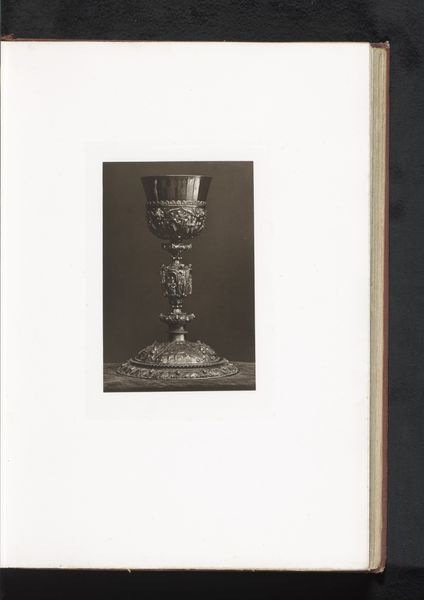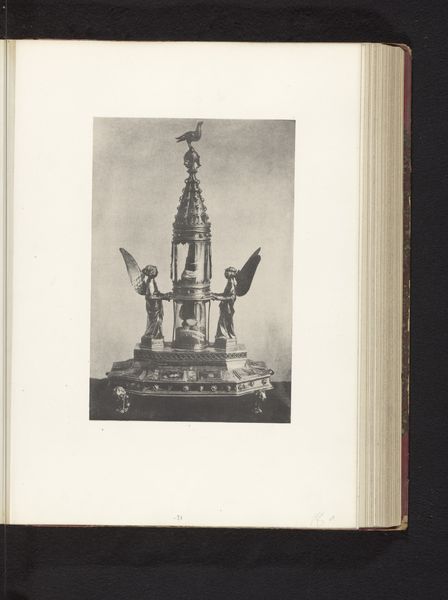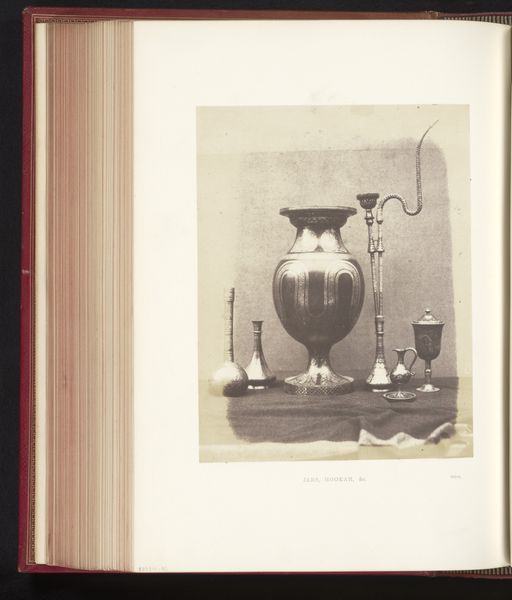
Drie vergulde kelken, opgesteld op een tentoonstelling over religieuze objecten uit de middeleeuwen en renaissance in 1864 in Mechelen before 1866
0:00
0:00
print, photography, gelatin-silver-print
#
medieval
# print
#
11_renaissance
#
photography
#
gelatin-silver-print
Dimensions: height 244 mm, width 190 mm
Copyright: Rijks Museum: Open Domain
Editor: This photograph by Joseph Maes, taken before 1866, captures three ornate, gilded chalices. They’re arranged on what looks like a velvet cloth, objects pulled from a medieval and Renaissance religious exhibition. There's a certain solemnity to the arrangement. What sort of weight do these chalices hold for you? Curator: Immediately, I am drawn to the careful arrangement and the inherent symbolism. These aren’t just cups; they are vessels of immense spiritual significance, particularly in a Christian context. They evoke ideas of ritual, sacrifice, and the Eucharist. The deliberate placement—the central chalice elevated, flanked by the other two—mirrors a kind of visual hierarchy often seen in religious iconography. Editor: Hierarchy—that makes sense. I hadn't considered how much the positioning added to that sense of importance. Are the details within the design telling, too? Curator: Absolutely. Consider the intricate patterns adorning each chalice. While this photograph only offers a black-and-white view, we can imagine the gleam of gold, the possible use of gems. Such meticulous craftsmanship indicates the high value placed on these objects. Each design element likely carried a specific meaning for the artisans and the people who used them. It creates cultural memory, recalling generations who used them in their devotional rituals. Editor: It’s like the objects are holding echoes of the past. Is it significant that this is a photograph *of* the chalices on display, and not just the chalices themselves? Curator: Precisely! The act of photographing these religious objects and displaying them in an exhibition changes their meaning. They become objects of historical and artistic interest, studied and appreciated in a new context, separated somewhat from their purely religious function and opened to a wider cultural gaze. They bridge the gap between belief and observation. Editor: So, they move from sacred to almost…secular? It's fascinating to see how an object's meaning can evolve just by shifting its context. Curator: Exactly! The transformation of an object and its inherent symbols across time reveals how cultural value is itself always evolving. Editor: That's given me a totally new perspective on this photograph! I will definitely remember this explanation during future viewings.
Comments
No comments
Be the first to comment and join the conversation on the ultimate creative platform.
